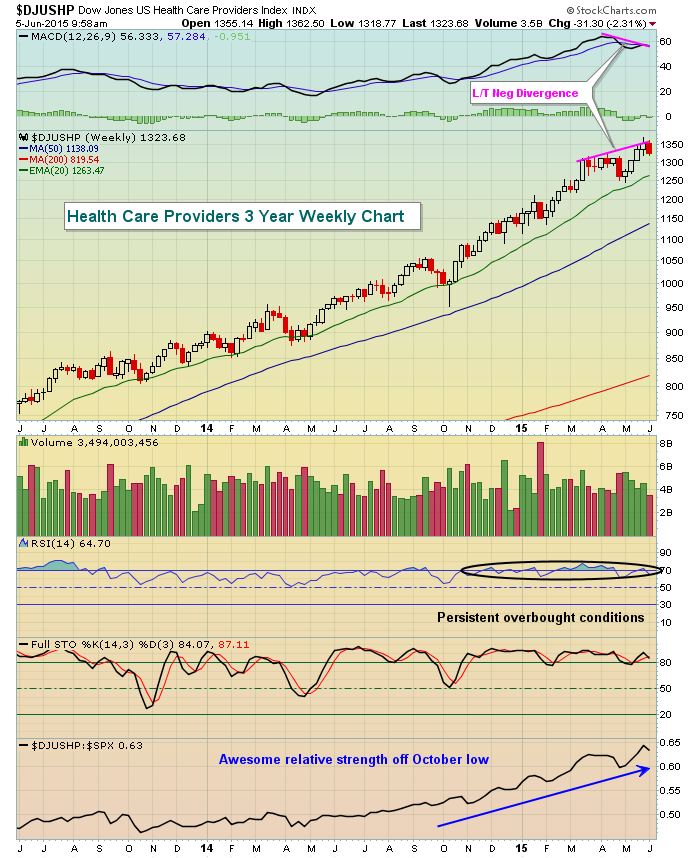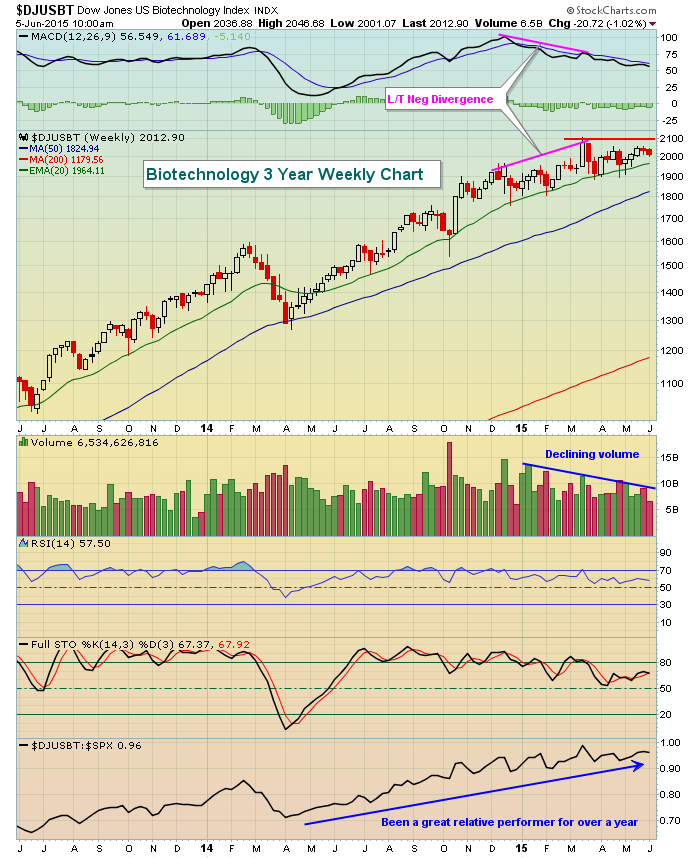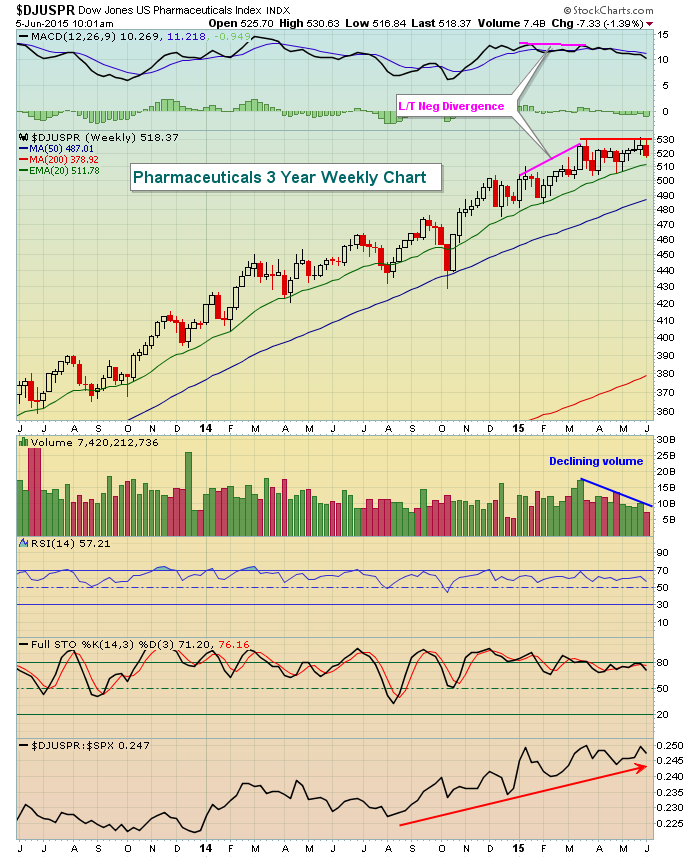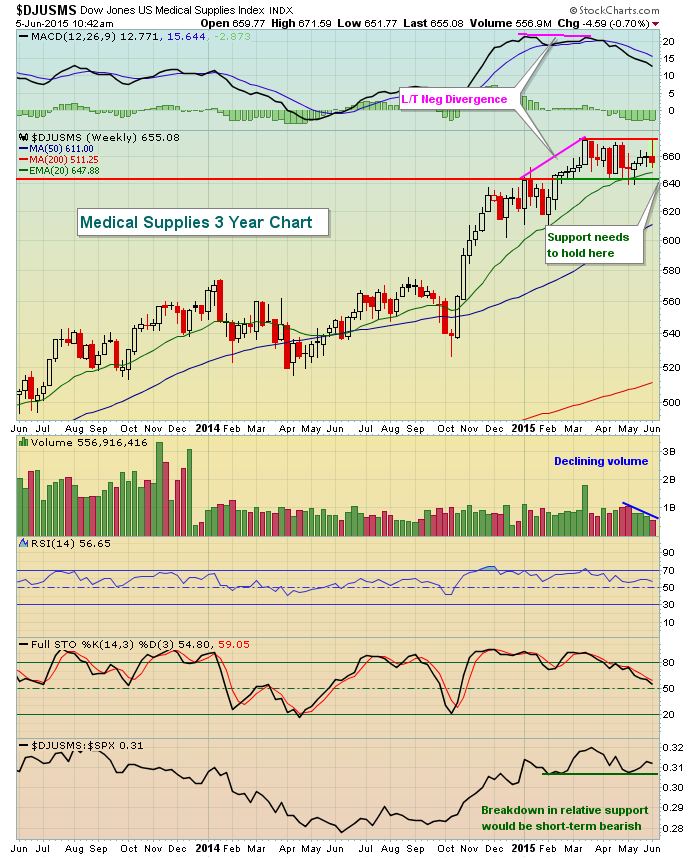Okay, I'm being a bit dramatic with this title because I'm not ready to throw the towel in on this bull market. But there are clearly warning signs technically that the next bout of rotation in the stock market could negatively affect the healthcare sector. As I always say, there are no guarantees as the market can do what it wants. But the warning signs are there and this sector has enjoyed relative leadership for several months. It's likely that another sector or sectors will need to carry the burden of this bull market into the second half of 2015. We'll see.
So what's the problem with healthcare? One word. Momentum. Or the lack thereof. I'm a big believer and follower of the MACD. 60 minute negative divergences on the MACD are bad for the very short-term, perhaps 1-3 days. Daily negative divergences on the MACD are bad for the short- to intermediate-term, let's say 1-3 weeks. Weekly negative divergences on the MACD can be rough for a longer period, sometimes several weeks to several months. Many long-term downtrends begin with a weekly negative divergence on the MACD. It's not that prices can't go higher, it's that there is considerable risk in holding with a weekly long-term negative divergence. It's the elevated risk that bothers me most. When the risk is high, I grow more cautious and build cash. That's what I've done. I don't believe the six year bull market is done, but I've said before we could be in for a choppy summer and when the leading sector shows signs of a potential top, it's time to be more cautious.
Let's take a look visually at what I'm talking about. There are five key industry groups within the healthcare sector and all five currently show long-term negative divergences on their respective weekly charts. So there's nowhere to hide in healthcare. Here they are:
Dow Jones U.S. Health Providers Index ($DJUSHP):
Dow Jones U.S. Biotechnology Index ($DJUSBT):
Dow Jones U.S. Pharmaceuticals Index ($DJUSPR):
Dow Jones U.S. Medical Supplies Index ($DJUSMS):
Dow Jones U.S. Medical Equipment Index ($DJUSAM):
The problems:
(1) Every industry group is showing a long-term negative divergence, it's not isolated.
(2) The MACD does not take into account volume, only price. But if you look at these charts, you'll see that volume has been declining on most of them as prices continue to rise. It appears to me that volume is also suggesting that momentum is slowing, confirming the MACD signal.
(3) Healthcare has been leading the last year of this bull market and rotation into and out of sectors is typical during different stages of bull markets.
(4) Though not illustrated above, many of the weekly RSIs are also showing negative divergences.
(5) Also not shown in this article are seasonality patterns. But over the last 18 years, the healthcare ETF (XLV) has struggled from June through September, posting negative annualized returns. So seasonality favors the bears at this time as well.
If you remain bullish healthcare, what you want to see is another breakout to fresh highs with volume accelerating. The bears, meanwhile, will be looking for further selling to clear recent price support levels to confirm the likelihood of more bearish behavior in the weeks and, possibly months, ahead.
I will be discussing much of this in my noon EST webinar today. Please join me if you can. It's simple and FREE, just CLICK HERE to register.
I hope each of you enjoys a nice weekend with family and friends!
Happy trading!
Tom











